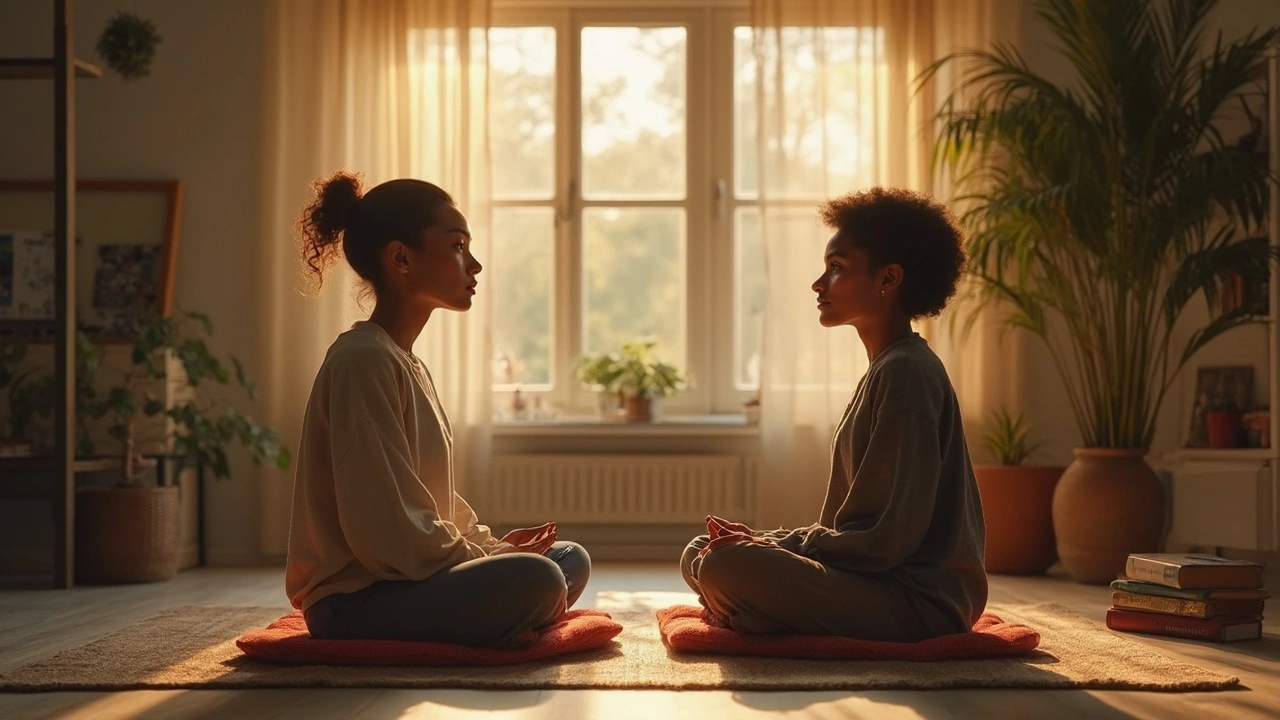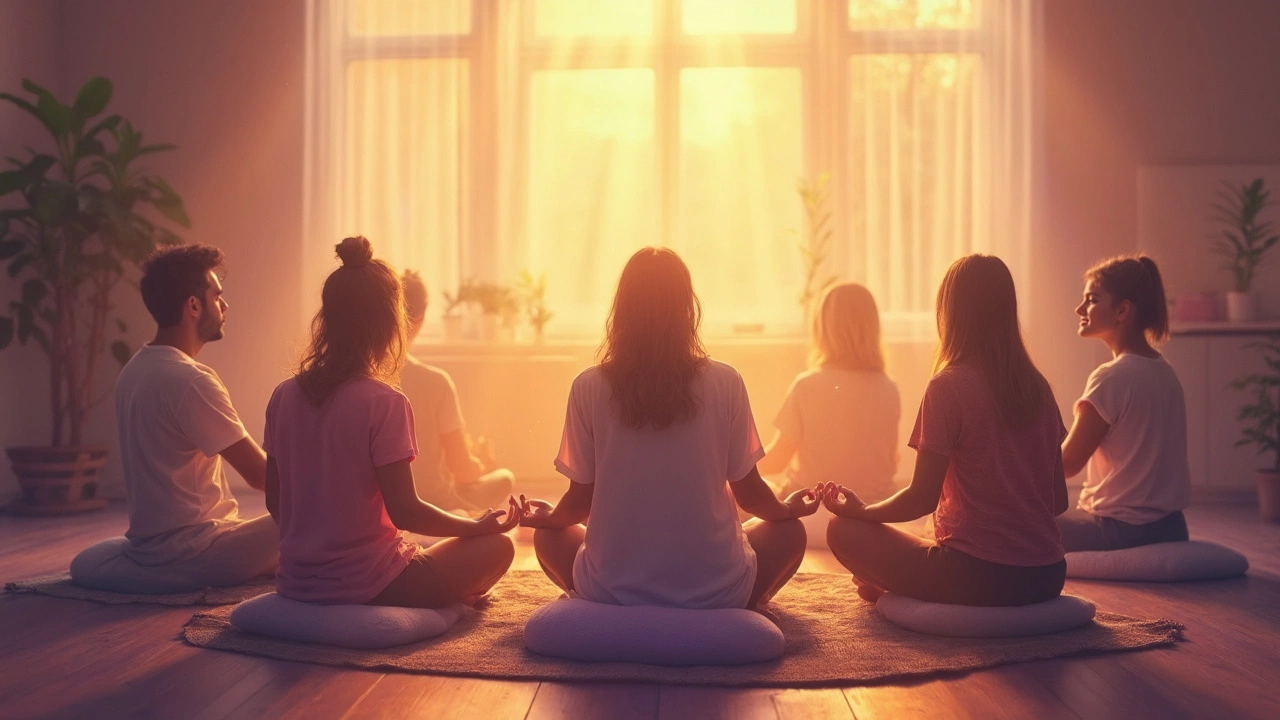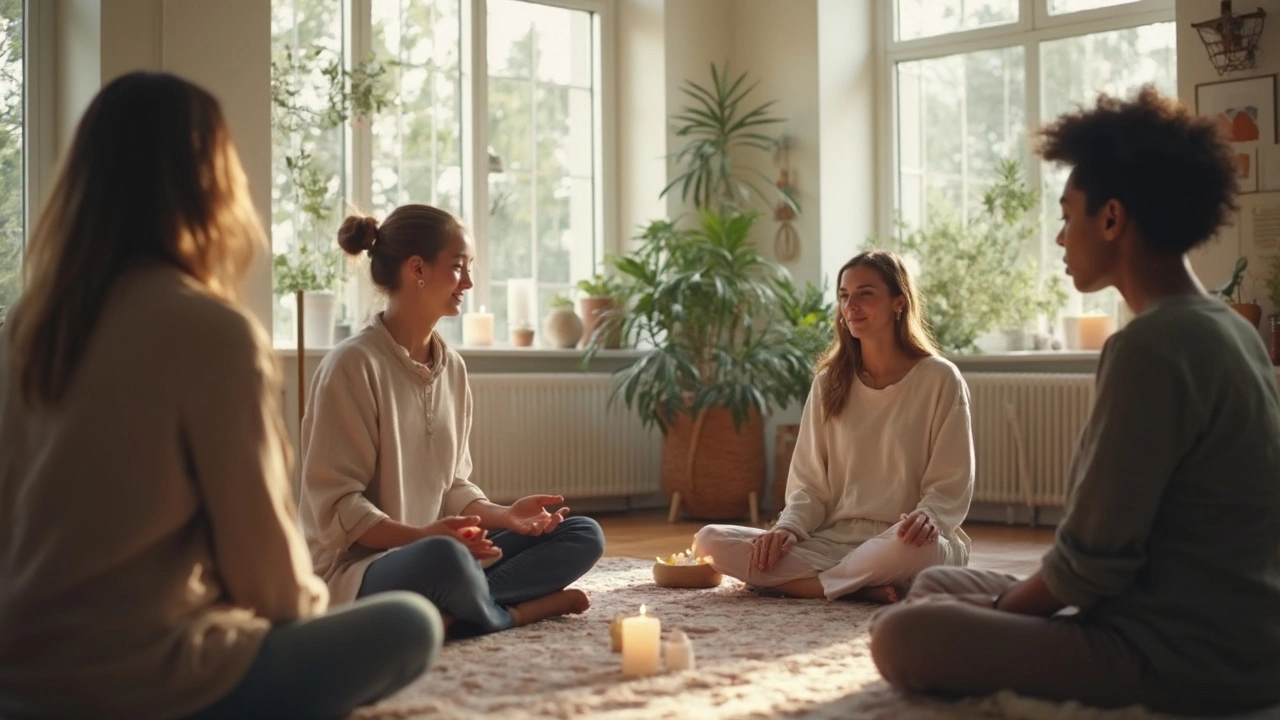Tantra and Chakras: Guide to Balancing Your Energy for Wellbeing
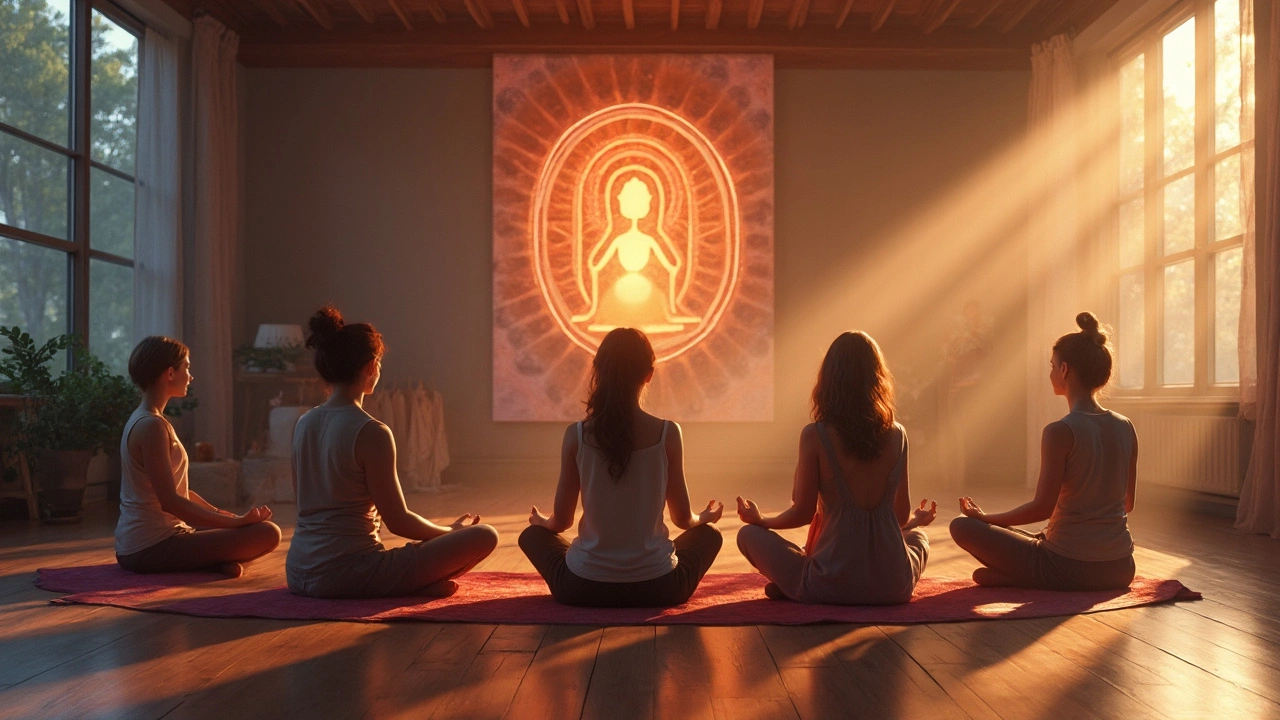
Close your eyes for a second. Imagine what would happen if you could actually feel every part of your body buzzing—not the jittery, too-much-coffee kind, but a deep sense of calm energy running up your spine. More people than ever are exploring tantra and chakras as a way to wake up that feeling and connect with more vitality, passion, and peace. Sounds pretty wild, right? But it’s not just for yogis in remote monasteries or couples on a retreat. From exhausted parents (been there) to overworked techies, the buzz about balancing your energy centers has sparked a movement—because who doesn’t want to feel more alive and at ease? There’s a fascinating world where ancient tradition meets self-discovery, and you don’t need to twist yourself into a pretzel to access it. Ever wonder if aligning those mysterious chakras can actually make a difference—mentally, emotionally, physically? That’s where tantra steps in, not as some mystical fluff, but as a practical guide to your body’s hidden fuel gauge. Let’s break it all down and see how these practices fit into hectic modern lives—yes, even if your dog Mocha is barking and your parrot Mango keeps yelling "hello."
What Are Tantra and the Chakras, and Why Should You Care?
Most people hear “tantra” and immediately think of candles, incense, and maybe a few steamy stereotypes, but honestly, there’s a lot more to it. Tantra is a centuries-old spiritual approach that comes out of India. It’s all about harnessing energy for total well-being, not just getting flexible or quieting your mind. At its heart, tantra teaches you how to become intensely aware of your energy, channel it, and use it for more than just getting through the day. You probably know about chakras—those swirling energy centers running from your tailbone to the top of your head—but maybe you’ve never really taken them seriously. Here’s the simple version: chakras are like battery packs or WiFi routers for your body and mind. Each one rules over particular feelings, organs, or traits. When they’re ‘in sync,’ things just work—less anxiety, more creativity, better sleep, stronger connections with loved ones (and maybe even your pets!).
But what happens when things get blocked up? Think of your energy flow like water pipes. When all the pipes are clear, the whole house gets what it needs. But leave one clogged, and suddenly you’re the one with the cold shower—or worse, a whole lot of emotional sludge. Stress, bad sleep, feeling disconnected, or a lack of “spark”? These can all be signs of uneven chakra energy. Tantra gives a hands-on blueprint for opening these pipes—through movement, breathwork, sound, visualizations, and even focus on touch or routine activities like eating or showering. It’s about paying attention, tuning in, and learning what your body is trying to say, instead of shoving your feelings in a drawer with stray socks. There’s a surprising amount of science poking into this now; studies out of Germany and the US have shown real shifts in brainwave patterns, stress hormones, and even pain perception just from regular breathwork and meditative visualization—both core to tantra and chakra work. Does this mean you’ll become a glowing orb of enlightenment in a week? Not likely. But it does mean those little practices can actually transform your “blah” days. Don’t think for a second you have to ditch your coffee or morning dog walk—you can fit these ideas right into daily routines (even with a wild parrot squawking in the next room).
How Tantra Uses Chakras to Promote Healing and Balance
If you’ve ever lit a candle and hoped your stress would melt away, you’re tapping into something tantra understood ages ago—ritual and focus can rewire your inner experience. Each of the seven main chakras lines up along your spine, each with its own personality. Here’s a breakdown for quick reference:
- Root (Muladhara): At the base, linked to grounding, stability, and basic needs. Think of it as your survival toolkit.
- Sacral (Svadhisthana): Just below the belly button; in charge of pleasure, emotion, and creativity.
- Solar Plexus (Manipura): Upper stomach area; all about confidence, willpower, drive.
- Heart (Anahata): Center of chest—self-love, compassion, and, oddly enough, even how you bond with fuzzy animals or cranky relatives.
- Throat (Vishuddha): Throat—communication, self-expression, and honesty.
- Third Eye (Ajna): Between your eyebrows; intuition, imagination, insight.
- Crown (Sahasrara): Top of head; spiritual connection and expansive awareness.
Picture this lineup as a rainbow, each color feeding into the next, each emotion echoing through your mind and body. When things are flowing, you literally feel lighter—like a weight lifted from your chest. So, how does tantra tune into these centers? Simple: it uses movement (like gentle yoga or even mindful walking), focused breathing (belly-to-chest, slow and even), sounds (“OM” or music in certain keys), and guided visualization (imagine a warm red glow at the base of your spine for the root chakra). Some people blend mantra chanting, gentle touch, or even food color therapy—chomping a red apple for grounding, or sipping mint tea for speaking clearly.
I’ll be honest, as someone who juggles two kids, a dog, and a parrot, I don’t have hours to meditate, but five minutes in the morning to pause, place my hand over my heart, and just breathe into it has shifted entire stressful days. I’ve seen my friends use these practices to support recovery from burnout, boost their focus, or even just get better at standing up for themselves in tough conversations. One wild research stat: Regular exposure to certain sound frequencies (look up “binaural beats for chakra balancing”) can lower cortisol—the stress hormone—by as much as 30% over a few weeks. No magic, just physiological shifts. Who knew your Spotify playlist could double as mood medicine?
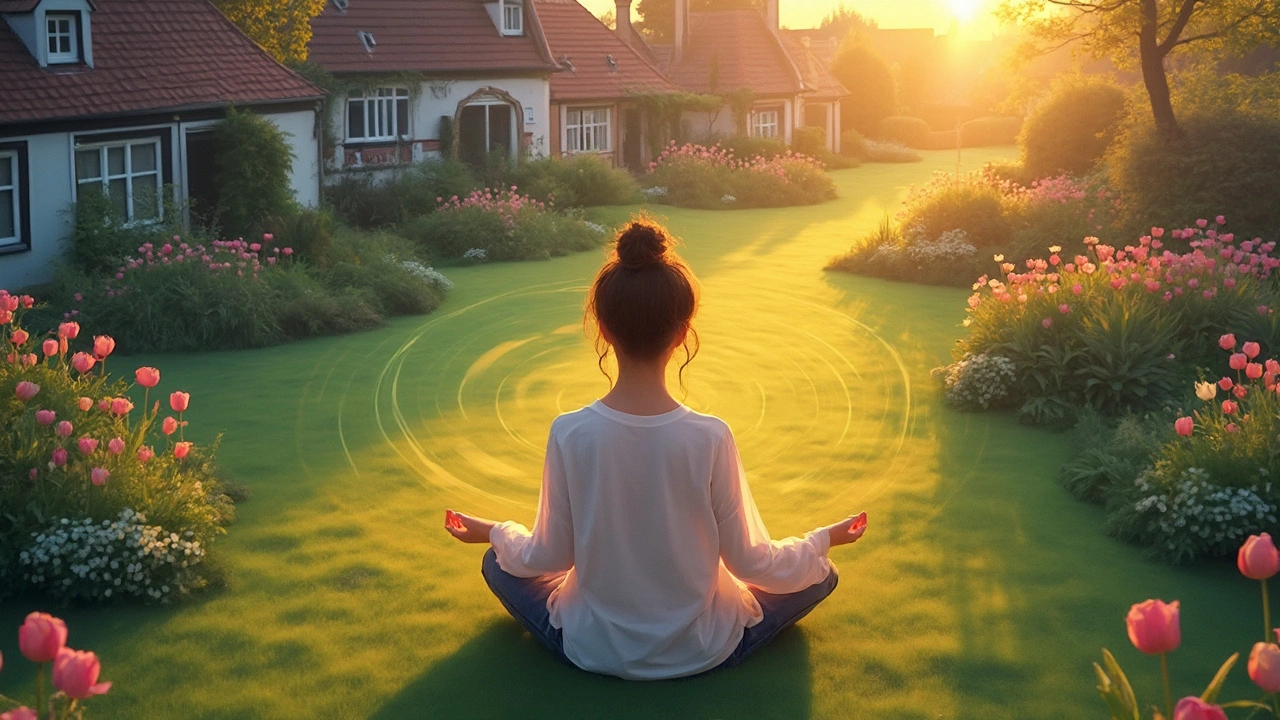
Practical Tips: Aligning Chakras in Your Daily Routine
You don’t need flowing robes or a guru to start. Here’s how you can dip your toes into the world of tantra and chakras, without rearranging your entire life:
- Start with awareness. Each morning when you wake up, stretch and scan your body. Where do you feel tight, tingly, or numb? Place a hand (or a dog paw, if Mocha is willing) on that spot and just breathe.
- Pick a chakra of the day. Feeling sluggish? Focus on your root—wear something red, go for a walk on grass, eat something earthy (carrots, beets, potatoes). Need inspiration? Focus on the third eye—try 2 minutes of gentle eye massage and listen to meditative sounds.
- Use the shower. As water runs down, imagine it as a stream of light washing over each chakra center. Visualize blockages melting away, just like dirt and soap.
- Infuse your busy schedule. When driving, breathe in for four counts and out for six, picturing yellow light swirling at your solar plexus. Prepping dinner? Focus on green foods if you're nurturing heart energy.
- Let touch be healing. Giving your child or pet a loving hug awakens the heart chakra. Even a self-massage on your feet at night can ground your energy.
- Affirmations help rewire your mindset. For example, for the throat chakra (when you know you need to speak up but clam up) try, “My voice matters and I express myself freely.”
For a tech-friendly option, there are legit guided meditation apps focused on chakra harmonization, like Insight Timer or Calm, and a bunch of YouTube playlists tuned to specific frequencies. I’ve noticed even five minutes a day can shift my mood, especially before bedtime. Science agrees—mindfulness practices have been linked to reduced inflammation, lower blood pressure, and even improved immune response. That’s pretty wild for something you can do while brushing your teeth. Oh, and if your day is really off, play your favorite song and dance it out. Moving your hips actually opens the sacral chakra. (Kids and pets love this, by the way. At our place, Mango sometimes whistles along, and Sylvia joins in with an interpretive wiggle.)
| Chakra | Main Quality | Typical Block Sign | Daily Life Tip |
|---|---|---|---|
| Root | Stability | Restlessness, anxiety | Walk barefoot, gardening |
| Sacral | Creativity | Low motivation | Dance, warm baths |
| Solar Plexus | Confidence | Self-doubt, indecision | Core breathwork, positive affirmations |
| Heart | Love/Compassion | Loneliness, resentment | Cuddles, gratitude list |
| Throat | Expression | Difficulty speaking up | Singing, journaling |
| Third Eye | Insight | Confusion, lack of focus | Meditation, visualization |
| Crown | Connection | Feeling lost, apathy | Star gazing, silence |
Experiment! Try food, music, movement, or affirmations for a week and jot down what you notice. If you feel a difference—even just a little lighter or less snappy on the school run—it’s worth keeping in your toolkit. No need for perfection, just curiosity.
How to Get Started or Go Deeper: Finding Support and Measuring Progress
Maybe you’re the DIY type and want to try everything at home—or maybe you want a bit more support. If you’re looking for a class or session, there’s plenty out there now: from virtual workshops to local yoga studios with classes specifically for chakra balancing or tantra for beginners. Look for “energy healing” or “chakra workshops” in your area—many communities, even small ones, have these offerings at wellness centers or holistic clinics. And don’t sweat it if you’re shy; many practitioners offer private sessions or relaxed group gatherings where nobody’s judging your technique or your pet parrot’s commentary.
What can you expect if you go to a session? Usually, a mix of guided meditation, gentle movement, breathing and sometimes hands-on healing or sound therapy. The best practitioners explain each step and help you notice how your energy shifts. I always tell newcomers to keep notes after a session—jot down your emotions, energy, dreams, or even sleep patterns. That’s your progress tracker. Prices vary wildly—some studios run donation-based intro classes (great if you’re just curious), while private sessions can range from $50 to $150. Do your homework by checking reviews or chatting with the practitioner first.
On safety—go with your gut. If anything feels "off," too out-there, or not respectful, step back. You want someone who makes you feel totally at ease (and keeps things confidential). Wear comfortable clothes, don’t eat a heavy meal beforehand, and drink plenty of water after—even gentle practices can leave you thirsty as your body recalibrates. If you’re dealing with a health condition or trauma, ask if your practitioner is qualified in trauma-sensitive practices. The world of tantra and chakras should always feel inclusive, open, and supportive—not intimidating or rigid. For the home adventurer, heaps of online tutorials and guided audio journeys make it easy to experiment on your own timeline. You can even get creative, blending in family-friendly versions so everyone can join in. Just wait till you see Jasper trying to meditate with Mango on his head—proof that energy work is for all shapes, ages, and (yes) even feathered friends.
People often ask if tantra and chakra work "really do anything." My answer: give it a fair shot for a couple weeks, and notice if you feel more grounded, expressive, or just a smidge kinder to yourself. Sometimes the biggest difference is just learning to show up for yourself—tuning into your body, moving a little, breathing a lot, and discovering what lights you up from the inside. Ready to feel more balanced? Life’s better when our energy is, too.
